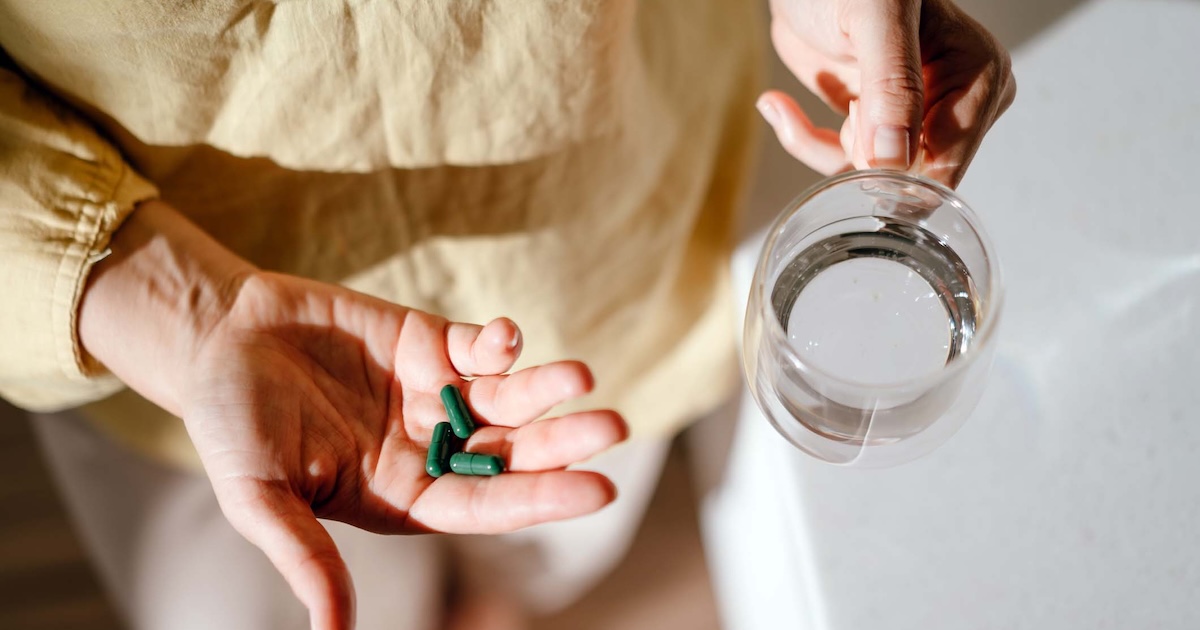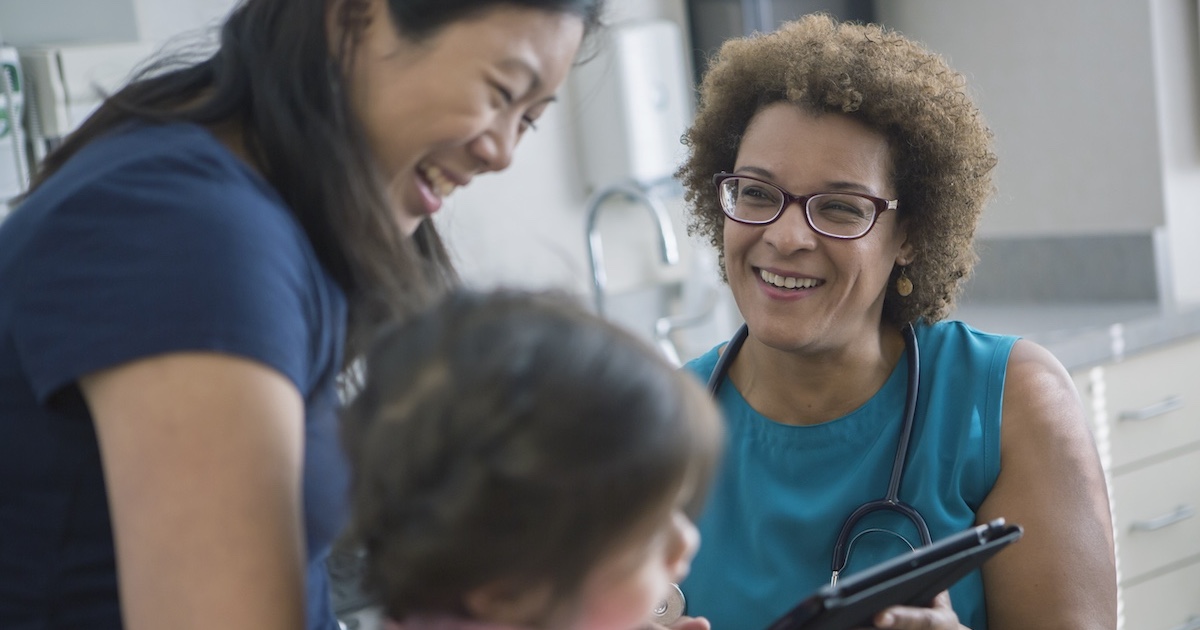 The FDA final guidance finally published last week and it included very few surprises. One new section in the final guidelines -- that was not included in the draft guidance -- is a list of the types of apps that the FDA says will fall under its enforcement discretion. That means that these apps may meet the definition of a medical device, but the "FDA intends to exercise enforcement discretion for these mobile apps because they pose lower risk to the public." So these apps won't be regulated as medical devices. It's an important section of the document since it adds to the clarity of mobile medical app regulation.
The FDA final guidance finally published last week and it included very few surprises. One new section in the final guidelines -- that was not included in the draft guidance -- is a list of the types of apps that the FDA says will fall under its enforcement discretion. That means that these apps may meet the definition of a medical device, but the "FDA intends to exercise enforcement discretion for these mobile apps because they pose lower risk to the public." So these apps won't be regulated as medical devices. It's an important section of the document since it adds to the clarity of mobile medical app regulation.
This list of apps includes 21 types of apps but the FDA also wrote that it "understands that there may be other unique and innovative mobile apps that may not be covered in this list that may also constitute healthcare related mobile apps." The agency says this list is not assumed to be or meant to be exhaustive, but rather is intended to provide some clarity.
In the pages to follow is a roundup of the FDA's list of apps that it does not intend to regulate even though they meed the definition of a medical device. This is the gray area of mobile medical app regulation so we've added some possible examples of apps that we think might illustrate each type of app the FDA describes in the abstract. These particular examples are not from the FDA -- just the quotes from the final guidance are.
#1 Some Psychiatric Apps

According to the FDA's guidance, some psychiatric apps might meet the definition of a mobile device, but it will choose not to regulate some of these apps: "Mobile apps that help patients with diagnosed psychiatric conditions (e.g., post-traumatic stress disorder (PTSD), depression, anxiety, obsessive compulsive disorder) maintain their behavioral coping skills by providing a 'Skill of the Day' behavioral technique or audio messages that the user can access when experiencing increased anxiety;"
A possible example of this type of app is MoodHacker, which was developed by ORCAS. ORCAS, which originally stood for Oregon Center for Applied Science, has been developing a number of mobile health apps backed by the National Institutes of Health and is now transitioning from a government-funded research group to a commercial company. The MoodHacker app takes a self-management approach to depression management. Users can track their mood on the app along with other factors like food and activity, to educate themselves about what things correlate to different moods. The app responds to the data with analysis and videos about depression.
#2 Reminder apps for pregnancy, smoking and more

"Mobile apps that provide periodic educational information, reminders, or motivational guidance to smokers trying to quit, patients recovering from addiction, or pregnant women;"
Like the first exception, this type of app will relay reminders and information without prescribing any medical advice or directly telling the user to follow the tips. There are many pregnancy tracking apps and smoking cessation apps currently available in app stores. BabyBump pregnancy tracker from Alt12 Apps offers reminders to pregnant women. BabyBump is available for download on Apple iOS, Android and Palm devices. The app helps parents track and share their stage of pregnancy. The app’s features include a due date calculator, personal countdown screen with weeks and days left for each trimester, weekly schematic embryo picture of your baby, weight and waist tracker, mood and symptom tracker, an social media notification settings. Last year, the app developers raised $1.2 million.
#3 GPS-enabled asthma management apps

"Mobile apps that use GPS location information to alert asthmatics of environmental conditions that may cause asthma symptoms or alert an addiction patient (substance abusers) when near a pre-identified, high-risk location;"
This is the first of two asthma-specific apps that the FDA has chosen to give a pass to because they are generally low risk. MobiHealthNews has been reporting on the development of GPS-enabled devices, like Propeller Health (formerly Asthmapolis), that help to alert asthmatics of air quality since 2009. Propeller Health, however, leverages a smartphone-enabled device that attaches to inhalers and that is FDA cleared already. An example of a standalone app that might better illustrate this "enforcement discretion" app might be the iAsthma GPS Tracker HD, which helps users understand what kind of environmental situations cause attacks.
#4 Some physical therapy apps

"Mobile apps that use video and video games to motivate patients to do their physical therapy exercises at home;"
Last year, this type of app was identified as a new trend for consumer apps, along with seasonal allergy management apps and doctor's office apps. At the time, MobiHealthNews counted almost three dozen PT app launches in the span of a year. This year, Microsoft Kinect has made news for its close ties to mobile physical therapy programs and in August a new accelerator, Health Wildcatters in Dallas, introduced its first class, which included PT Pal, a physical therapy app.
#5 Some drug interaction apps for consumers

"Mobile apps that prompt a user to enter which herb and drug they would like to take concurrently and provide information about whether interactions have been seen in the literature and a summary of what type of interaction was reported;"
The description does stipulate that the app must provide information seen in literature and about the specific interaction reported, which adds some credibility to any medical claims that the app chooses to make. A few months ago, CVS added an OTC drug interaction checker to its main mobile app. With the new interaction checker, users can scan the barcodes on OTC medication packages with their phones or enter the name of the drug or an active ingredient to bring up a list of potential interactions.
#6 Other asthma management apps

"Mobile apps that help asthmatics track inhaler usage, asthma episodes experienced, location of user at the time of an attack, or environmental triggers of asthma attacks;"
Asthma tracking apps also fit into this category. Companies like AsthmaMD use manually entered data to keep a journal of asthma episodes, visualize the information on a graph, and track how medication is managing the asthma. In 2010, FCC’s 360-page National Broadband Plan praised AsthmaMD. Users can also opt-in to share their data with doctors and researchers anonymously so that the medical community may better understand the disease.
#7 Apps with predefined tracking fields from a provider
"Mobile apps that prompt the user to manually enter symptomatic, behavioral or environmental information, the specifics of which are pre-defined by a health care provider, and store the information for later review;"
This seems like a fairly general type of app but the keywords above seems to be "manually" entered and "pre-defined by a health care provider". This one was difficult to come up with a specific example -- as it relies on the provider to pre-define specifically what is being tracked.
#8 Preventative screening apps from established medical sources

"Mobile apps that use patient characteristics such as age, sex, and behavioral risk factors to provide patient-specific screening, counseling and preventive recommendations from well-known and established authorities;"
The FDA didn't specify exactly what constitutes a "well-known" or "established" authority, but this would most likely describe an app created by a hospital for patients to gather information and health tips. While Henry Ford Health Systems' app for cancer patients is designed with a patient who likely already has a diagnosis, among other things it offers patients counsel on specific information about their cancer treatment, next steps, and potential trials based on personal factors.
#9 Some symptom navigator apps

"Mobile apps that use a checklist of common signs and symptoms to provide a list of possible medical conditions and advice on when to consult a health care provider;"
It's seems important to note that with this type of app, it doesn't give the user a concrete diagnosis, just some possible suggestions. WebMD has been offering this kind of service online and on its apps since 2009. Last year, WebMD made news with the announcement of its Health Assistant addition to Independent Blue Cross' (IBC) member portal. Similar to its other programs, the Health Assistant will provide IBC members with an interactive wellness program, combining an online health risk assessment with a digital coach that will give daily tips, and also allow the user to set personal goals and track their progress in achieving them.
#10 Symptom navigators that lead to provider locations and suggestions

"Mobile apps that guide a user through a questionnaire of signs and symptoms to provide a recommendation for the type of health care facility most appropriate to their needs;"
Like the last app type, this one suggests, not only a few potential diagnoses, but also appropriate healthcare facilities to visit once the problem has been potentially figured out. Aetna's iTriage does just that, and as of last month, the app will be working on offering mid-sized employer groups a customizable version of the app that guides users to in-network providers. This year, President Obama mentioned iTriage in his speech about his management agenda.
#11 Apps that record clinician conversations with patients and make them available later

"Mobile apps that record the clinical conversation a clinician has with a patient and sends it (or a link) to the patient to access after the visit;"
This example is similar to Jiff's original (and now defunct) offering, JiffPad. JiffPad was created to help doctors capture conversations they have with patients and enable patients to revisit it as many times as they’d like. The company raised $7.5 million last year. In June, the company announced a partnership with Towers Watson and a pivot from provider-focused patient engagement to business-to-business employee wellness curation, with a service called Health Outcomes Marketplace.
#12 Nurse hotline apps

"Mobile apps that are intended to allow a user to initiate a pre-specified nurse call or emergency call using broadband or cellular phone technology;"
Technically, this could refer to any app, even hospital-branded apps, that offer a contact section for patients to call various offices. Jitterbug's Live Nurse call also has a similar calling feature. In 2010, the company announced the Live Nurse service had attracted 12,000 users in the six months since it first went live.
#13 PERS apps
 Life Alert Smartphone App
Life Alert Smartphone App
"Mobile apps that enable a patient or caregiver to create and send an alert or general emergency notification to first responders;"
A common use case for emergency notifications and alerts takes the form of mobile personal emergency response system (mPERS). Life Alert, known for its device that gives elderly people who have fallen and can't get up an easy way to contact emergency personnel, also offers the service via a smartphone app. Like the device, this app offers users a (in this case -- virtual) button to press if they have fallen.
#14 Some medication tracker and reminder apps

"Mobile apps that keep track of medications and provide user-configured reminders for improved medication adherence;"
Mango Health, a Rock Health graduate, could fall under the category of a standalone app that helps keep track of medications. In April, Mango Health launched its gamified medication adherence app and released data on the beta testing results 16 weeks later. At the time the company said, 64 percent of all the medications added to the app are prescription drugs and 36 percent are over-the-counter medications or supplements. Other apps similar to Mango Health that have recently made news include Care4Today and Medisafe.
#15 Tethered PHR apps

"Mobile apps that provide patients a portal into their own health information, such as access to information captured during a previous clinical visit or historical trending and comparison of vital signs (e.g., body temperature, heart rate, blood pressure, or respiratory rate);"
While the latter half of the description could refer to apps connected to activity monitors or even standalone apps that can check a user's heart rate, the first half more likely refers to electronic health records. The government has made its own efforts to make this accessible for patients with Blue Button, but private companies have also been updating their EHR offerings. EHR vendor drchrono announced a new patient-facing tethered PHR app this summer called OnPatient.
#16 Apps that provide display trends in personal health incidents
"Mobile apps that aggregate and display trends in personal health incidents (e.g., hospitalization rates or alert notification rates);"
This one was a real head-scratcher. Which apps available today display that kind of data for an individual?
#17 Some blood pressure tracking apps

"Mobile apps that allow a user to collect (electronically or manually entered) blood pressure data and share this data through e-mail, track and trend it, or upload it to a personal or electronic health record;"
Collecting blood pressure data implies the use of a device in addition to an app, but many apps connected to these devices could be used just for data collection. iHealth and Withings both have free companion apps with the capability to monitor the blood pressure data.
#18 Certain oral hygiene apps

"Mobile apps that provide oral health reminders or tracking tools for users with gum disease;"
While some apps like these which have connected devices, like Beam Brush, might still need to be FDA approved, other apps like the Oral-B App offer health reminders, tips and a brushing timer to help users with oral hygiene without offering any direct medical advice.
#19 Some prediabetes, prevention focused apps

"Mobile apps that provide prediabetes patients with guidance or tools to help them develop better eating habits or increase physical activity;"
Omada Health, part of Rock Health's 2011 class and developer of Prevent, an online and mobile diabetes prevention program, offers a prediabetes program similar to the one described by the FDA. In March, Omada Health landed $4.7 million to expand the rollout of the 16-week behavior-modification and weight-loss program for people with prediabetes and eventually expand its services to other diseases. While the Prevent program uses home monitoring devices, as of December the devices were not connected to the online system.
#20 Certain addiction-related apps

"Mobile apps that display, at opportune times, images or other messages for a substance abuser who wants to stop addictive behavior;"
There are a fair number of apps out there for those battling various types of addictions, including substance abuse. One such app is iPromises Recovery Companion. The app offers trigger alerts, visual journals for moods, challenges, and accomplishments.
#21 Many fitness and wellness apps

"Mobile apps that are intended for individuals to log, record, track, evaluate, or make decisions or behavioral suggestions related to developing or maintaining general fitness, health or wellness, such as those that..."
Health and fitness apps abound and installs are predicted to grow 60 percent by 2017. MobiHealthNews recently compiled a slideshow of seven fitness apps with at least 16 million downloads, which includes MyFitnessPal, RunKeeper and Azumio. While some of these apps can integrate with devices, they almost all work as standalone apps, too.


